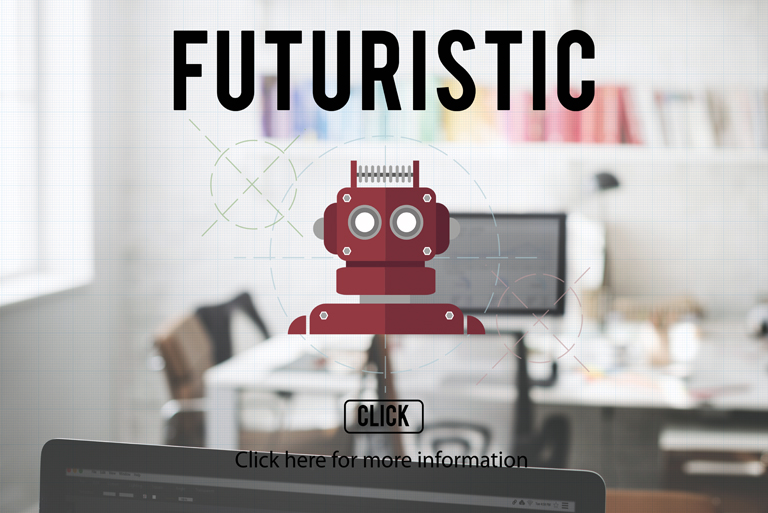AI-Native Design: Crafting Interfaces for a Post-Click Era

The future of user experience isn’t being clicked — it’s being predicted.
We’re entering a phase where screens and buttons no longer dominate interaction. Instead, intelligent systems powered by artificial intelligence are redefining how users engage with digital products. This new frontier is known as AI-Native Design — where UX is not just smart, but anticipatory, adaptive, and invisible.
At UXGen Design Studio, we’re at the forefront of this shift, helping businesses create digital experiences that respond in real-time, learn continuously, and adapt naturally. Across the UXGen ecosystem — from UXGen Technologies to UXGen Academy and UXGen Marketing — we’re shaping the design principles that define tomorrow’s UX.
Let’s design an experience your users will remember — and your business will benefit from.
What Is AI-Native Design?
AI-Native Design is the intentional creation of digital experiences specifically for AI-powered environments. It goes beyond integrating AI features like chatbots or smart search. Instead, it reimagines UX around system intelligence, user intent, and minimal friction.
In AI-native systems:
-
Interfaces adapt dynamically based on behavior and data.
-
Conversations replace menus.
-
Decisions are predicted, not just triggered.
From music apps that auto-play based on your mood to customer service tools that solve problems before you even ask — these are examples of AI-native thinking in action.
The Rise of the Post-Click Experience
Clicks have served as the backbone of digital interaction for years. But users now demand faster, smoother, and more personalized experiences. They don’t want to find; they want to be found. They don’t want to choose; they want to be understood.
AI enables:
-
Intent detection based on real-time signals
-
Contextual personalization across touchpoints
-
Reduced reliance on visible UI
We are no longer just designing for screens — we’re designing for scenarios, moments, and behaviors.
Core Principles of AI-Native UX
At UXGen Design Studio, we use these five guiding principles to build AI-native interfaces:
1. Design for Anticipation, Not Just Action
AI-native UX starts with understanding what users are likely to need — then delivering it ahead of time. Whether it’s predictive search suggestions or intelligent reminders, the experience begins before the user makes a move.
2. Build Fluid, Evolving Interfaces
Interfaces are no longer fixed. AI-native design allows layouts, components, and flows to adjust dynamically. For example, dashboards may reorganize based on past usage patterns, or content may shift to reflect time of day or user goals.
3. Use Language as Interaction
Voice and chat interfaces are becoming the new norm. Whether it’s customer support, education, or healthcare, users expect to communicate naturally. At UXGen, we design interfaces that understand tone, memory, and human intent.
4. Eliminate Friction Through Minimalism
With AI, the interface itself can disappear. Instead of clicking through menus, users are guided to outcomes with minimal effort. This shift from “designing screens” to “designing outcomes” marks a fundamental change in UX practice.
5. Build Trust Through Transparency
When systems make decisions on behalf of users, explainability becomes essential. AI-native design requires transparency about what the system is doing — and why. This builds confidence and enables users to stay in control.
How UXGen Is Applying AI-Native UX
Across the UXGen network, we’ve implemented AI-native design in real-world projects spanning sectors like SaaS, fintech, edtech, and healthcare.
Smart Dashboards for SaaS Platforms
At UXGen Design Studio, we built a modular dashboard for a B2B SaaS company where widgets reorganize based on the user’s job role, workflow patterns, and time-sensitive goals. No two users see the same interface — it adapts intelligently to maximize productivity.
Voice-Enabled UX in Healthcare
In partnership with UXGen Technologies, we developed a voice-first health app for seniors. Instead of navigating menus, users receive medication reminders, health summaries, and alerts through conversational prompts, improving accessibility and engagement.
Predictive Campaign Tools in Marketing
Through UXGen Marketing, we’re building interfaces that suggest creative assets, audience segments, and timing based on prior campaign performance. These systems reduce manual work for marketing teams and boost campaign success rates.
Educating AI-Native Designers
At UXGen Academy, we’re training the next generation of UX professionals to design for AI-first environments. Our curriculum covers behavior modeling, conversational interfaces, and ethics in AI — preparing designers for the real demands of the industry.
We design interfaces that convert, retain, and scale. Have a project in mind or just exploring ideas? We’re just a message away.
Challenges in AI-Native UX
While the benefits are clear, AI-native UX poses unique challenges that must be addressed through thoughtful design:
-
Privacy and Data Use: Personalization must be balanced with consent and data security.
-
Model Reliability: Designers must account for uncertainty in AI outputs.
-
Bias and Fairness: AI systems must be tested to avoid reinforcing harmful stereotypes.
-
User Control: Users need the ability to understand and override automated decisions.
At UXGen, we address these issues collaboratively — blending technology, ethics, research, and design. This integrated approach ensures we don’t just build smart systems — we build responsible, user-centered ones.
The Role of UXGen’s Ecosystem in Shaping the Future
The future of design is not being led by one discipline alone — it’s being shaped by collaboration across design, development, education, and marketing.
-
UXGen Technologies develops scalable AI-enabled platforms that make AI-native design technically feasible.
-
UXGen Academy prepares the talent pool with skills in ethical, system-level design thinking.
-
UXGen Marketing leverages AI-native interfaces to build smarter campaigns and drive performance.
-
UXGen Design Studio brings it all together through experience strategy, research, and interface design.
Together, we don’t just follow UX trends — we drive them.
Conclusion: Designing for the Mind, Not Just the Screen
AI-native UX is a shift in how we think, not just how we build.
It asks us to design for intent, not just interaction. To create experiences that aren’t reactive, but proactive. It challenges us to blur the line between product and user — so much so that the product becomes an extension of the user’s needs, context, and goals.
At UXGen Design Studio, we believe that the next generation of digital products won’t just be beautiful — they’ll be intelligent, ethical, and intuitive. And with the strength of UXGen Technologies, UXGen Academy, and UXGen Marketing behind us, we’re helping brands lead this evolution.
If you’re building something smart — or want to make your product smarter — let’s design beyond the click.
Let’s map out your UX journey with a free 30-minute strategy session. No pitch — just value and direction from our expert team.
Frequently Asked Questions (FAQ)
1. What makes AI-native design different from traditional UX?
Traditional UX focuses on fixed flows and predictable navigation. AI-native UX emphasizes contextual, adaptive systems that anticipate user needs and reduce manual interaction.
2. Is AI-native UX only for large companies?
No. Even small startups can apply AI-native principles using simple automation or personalization tools. UXGen Design Studio helps businesses of all sizes begin with lightweight intelligent UX strategies.
3. How is UXGen Academy preparing students for AI-native UX?
UXGen Academy’s curriculum includes training in conversational UX, predictive systems, zero UI, and ethical AI design, giving students a competitive edge in the evolving job market.
4. Can AI-native design improve marketing performance?
Yes. At UXGen Marketing, we’ve seen how AI-powered UX — such as smart CTAs and adaptive landing pages — can increase conversions and reduce bounce rates through personalization and real-time content delivery.
5. How does UXGen ensure ethical AI design?
We follow strict guidelines for data transparency, user consent, and bias testing. Our teams at UXGen Technologies and UXGen Design Studio work closely with legal and ethical experts to ensure responsible implementation.

UX Debt is Real: Why Delaying Design Fixes Costs More Than You Think
The Hybrid Design Revolution: Blending Art, Data & Behavior in Modern UX

About the Author
Subscribe for fresh
tips & top articles
UXGen Studio uses the data submitted through this form to send you relevant marketing insights, blog updates, and learning resources. To learn more, read our Privacy Policy.





